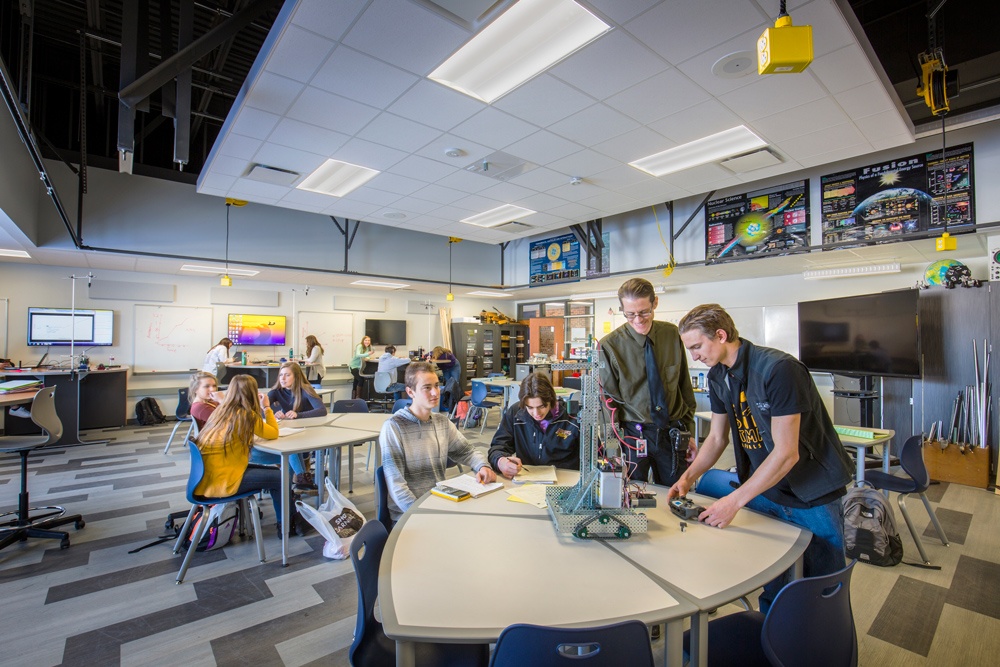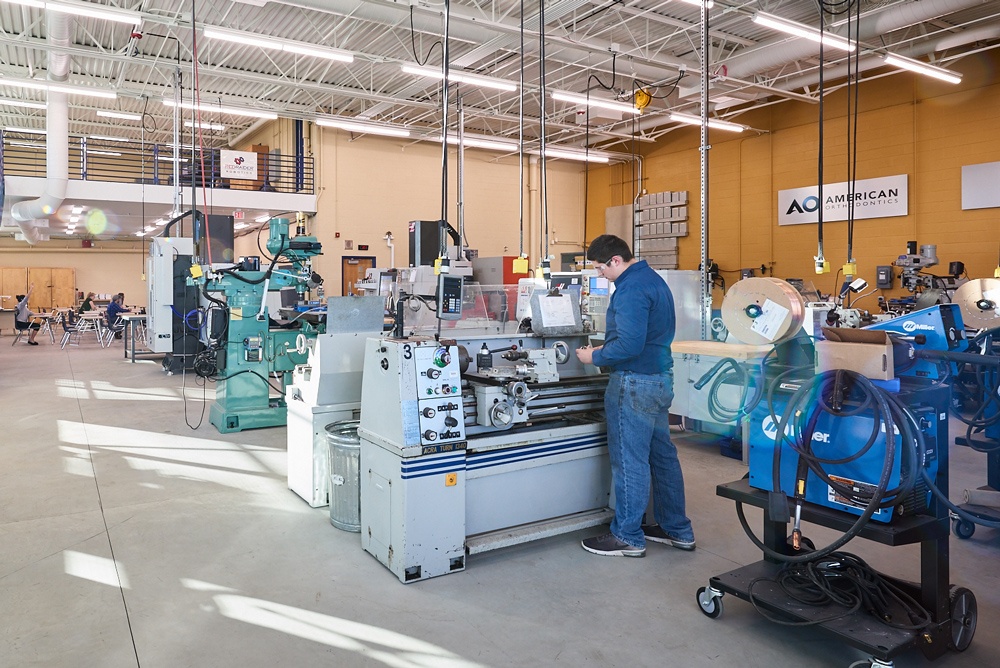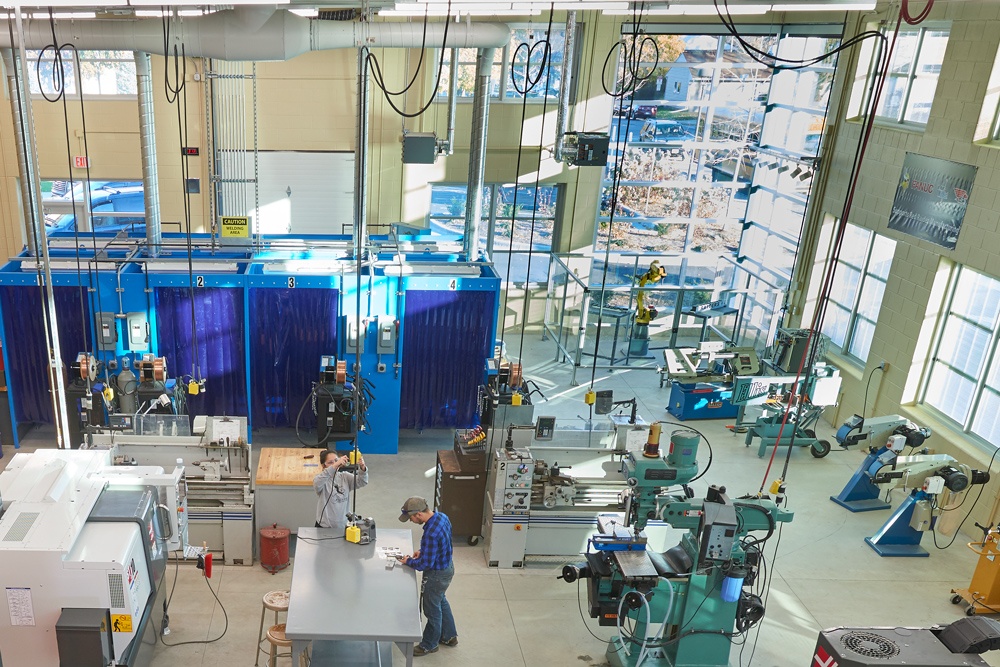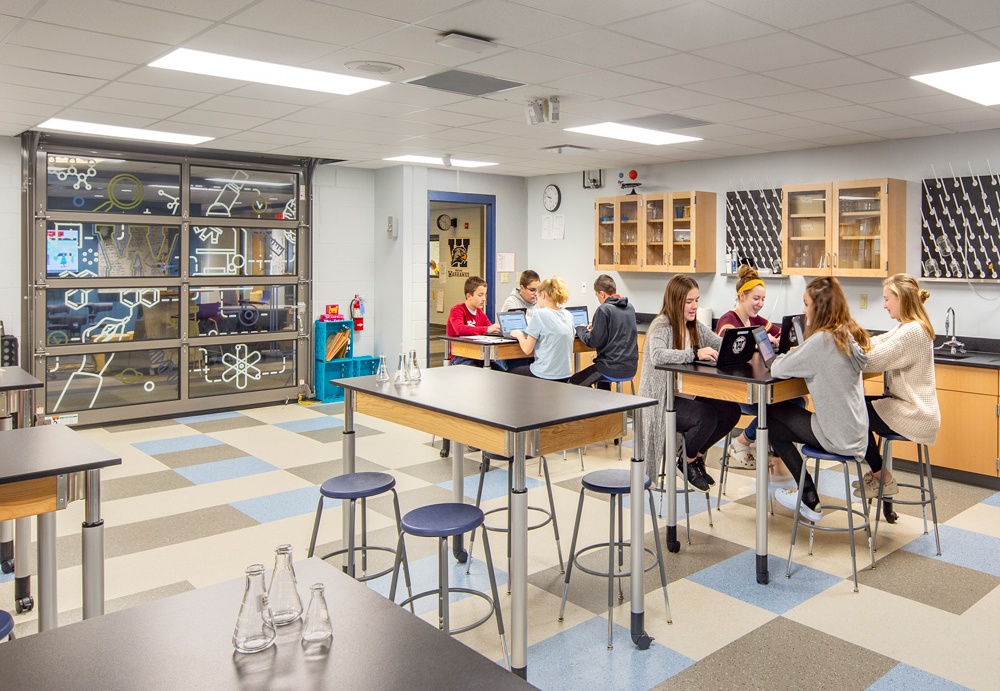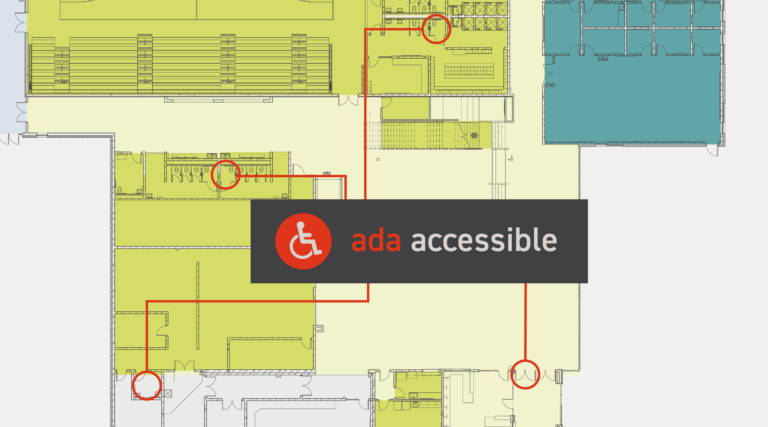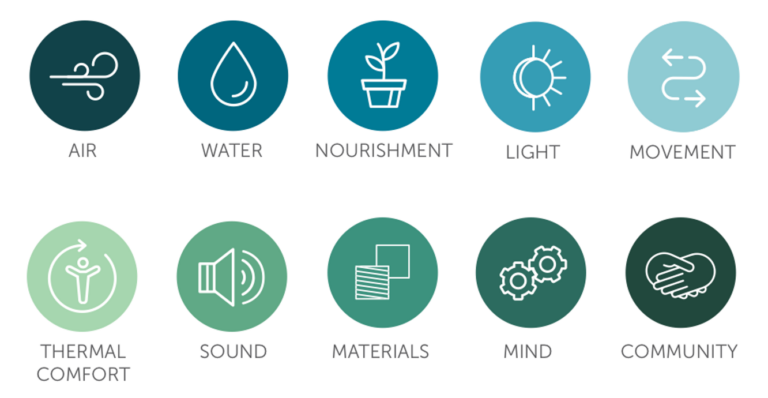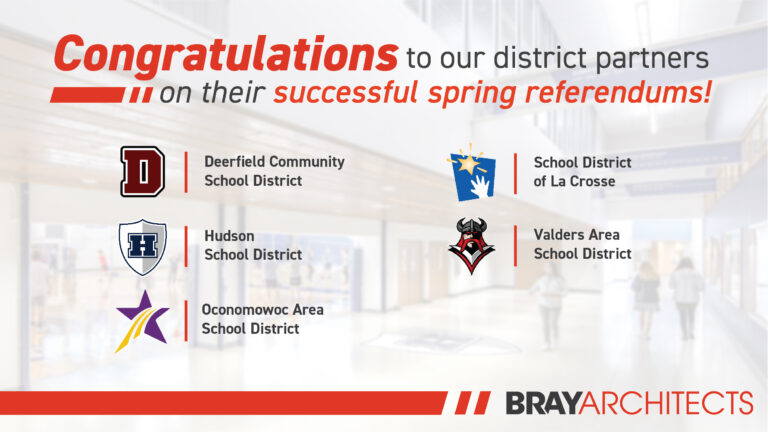To celebrate National STEM/STEAM Day, we wanted to share insight from our years of experience designing these important educational spaces. Here are four takeaways we’ve learned after creating STEM, STEAM, and tech ed spaces for more than 35 communities.
STEM/STEAM programs gain strength through partnerships with local businesses.
The addition and renovation of Tech Ed space at Sheboygan North High School was driven by the formation of the Red Raider Manufacturing program. Red Raider Manufacturing is a partnership between the Sheboygan Area School District, local manufacturing companies, and Lakeshore Technical College. Such partnerships can provide critical financial support, as well as access to knowledgeable and experienced staff who may volunteer their time helping students.
Visibility is important.
While these environments usually require dedicated equipment and space, they do not have to be isolated from the more traditional learning spaces within a school. STEM/STEAM students thrive when they have an audience. The STEM addition at Sheboygan North High School provides visible, well-equipped manufacturing education space at the front door of the school to ensure all students and visitors see the space in action.
STEM/STEAM spaces can take many forms.
Although “STEM/STEAM Room” is a popular catch-all label, it is important to remember that these spaces can support a wide variety of programming. They might be a fabrication lab or maker space, computer lab, engineering lab, art room, robotics room, auto garage, metal shop, woodshop, a general small- and large-group collaboration area, or they may serve several of these functions at once. Most importantly, the space should be flexible in case programming needs change in the future. For example, the classrooms that were a part of the STEAM addition at Oregon Middle School are large and open, with ample doors and windows connecting the spaces. These characteristics allow the learning spaces to be easily modified based on courses being offered.
When planning STEM/STEAM spaces, think big!
Big things can happen, even in relatively small spaces. One way to ensure that a STEM/STEAM spaces remain flexible for future programming needs is to install large overhead garage doors to the outdoors or to other interior spaces. The STEM addition and science lab renovations at Wheatland Center School are accessible by garage doors. This eases the logistics of installing large equipment in the future, allows oversized class projects to leave the building, and provides visual access to the space to showcase students’ activities to the rest of the school.
Are you considering a STEM/STEAM project in your community? Connect with us to learn more about how we’ve helped dozens of school districts strengthen their STEM/STEAM spaces and how we can help you meet your goals.
